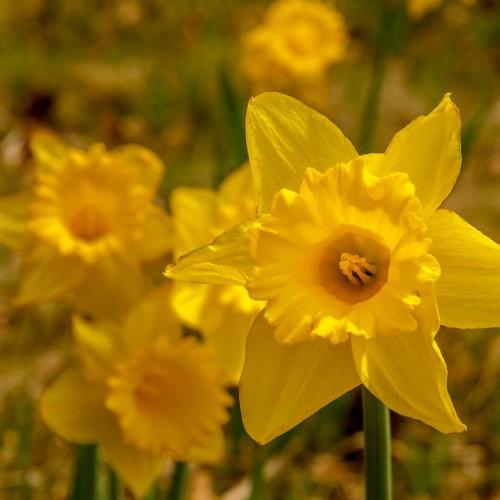
trumpet daffodil
Narcissus 'Spellbinder'
Cycle:
Perennial
Watering:
Average
Hardiness Zone:
3 - 8
Flowers:
Flowers In Spring
Sun:
Full sun,part shade
Leaf:
Yes
Growth Rate:
High
Maintenance:
Low
Care Level:
Medium
watering
Trumpet daffodils (Narcissus 'Spellbinder') prefer moist yet well-draining soil with plenty of organic matter. Water deeply and regularly during the growing season, about once every 2 weeks, providing enough water to keep the entire root system moist. During periods of excessive heat, water more often. Reduce watering in late summer and early autumn as the plants prepare to go dormant. Do not water during the dormant period (normally from late autumn to late winter).
sunlight
The trumpet daffodil (Narcissus 'Spellbinder') prefers full sun to partial shade and needs at least 6 hours of direct sunlight per day to thrive. Too little sun may result in pale flowers and reduced foliage. In general, this species prefers morning and late afternoon sun, providing total shade during the hottest part of the day if possible. In areas that experience long periods of extremely hot temperatures, some dappled shade is beneficial.
pruning
Pruning trumpet daffodils, such as Narcissus 'Spellbinder', should occur after their natural bloom season has finished. The best time to prune is when the foliage has fully died back, which usually happens in late spring or early summer. Once the foliage has been removed, you can snip off the spent blooms at the stem base just above the foliage line. Pruning should be kept to a minimum as it can reduce the energy of the daffodil for the following year. Excessively pruning can also reduce the number and quality of the blooms.
